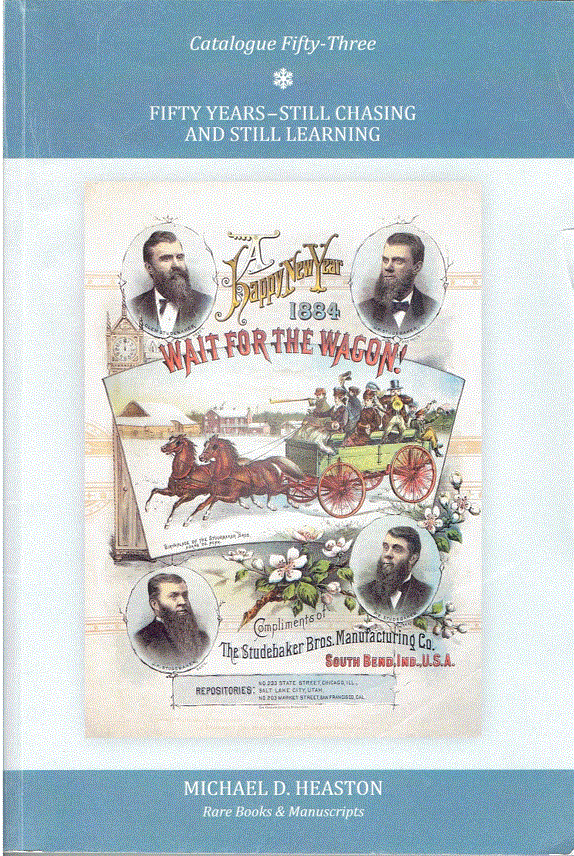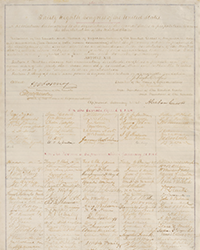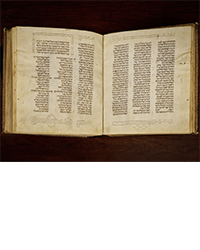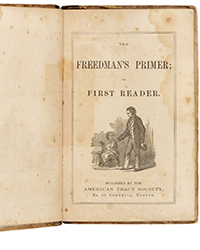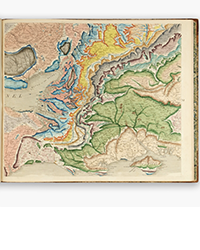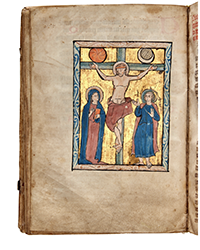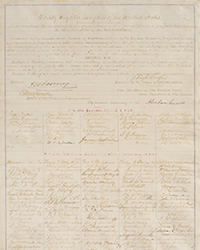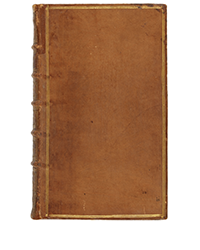Michael D. Heaston Rare Books & Manuscripts has issued their Catalogue Fifty-Three, Fifty Years – Still Chasing and Still Learning. Inside, it is also called Fifty Years of Americana, which tells us what type of material will be found. Actually, it's mostly a bit more targeted, the material being focused on the American West. Heaston is located outside of the major markets of America, even for the West. He is situated in Wichita, Kansas, which must be a good place to find obscure material, though many of his books come from major collectors in the more populated areas. These are some sample selections from this catalogue.
We will begin with one of the great classics and rarities of the West, described by Heaston as the “greatest outlaw book in Western Americana.” There have been a great many books written about William Bonney (born Henry McCarty), better known as Billy the Kid, but only one was written by the man who shot him (with a ghost writer's help). Sheriff Pat Garrett shot and killed Billy in the dark, the Kid unaware of what was about to happen. Billy certainly gained his share of notoriety for his activities in New Mexico, including several killings, notably of a couple of law officers during a successful jail break. However, it is unlikely that his legend would have grown and lived on as it has were it not for Sheriff Garrett. Garrett was a good self-promoter, and the more he built up Billy's legend, the greater his own became for having killed him. As such, his book has its share of inaccuracies. Nevertheless, it succeeded in its aim of creating the greatest outlaw legend of the Old West. Or, as Howes called it, “First genuine biography of America's most spectacular example of juvenile delinquency.” Billy was just 21 when he was killed. Garrett lived to be 58, but he too was killed in a case that is still unsolved. Item 66. Priced at $32,500.
It may have been ridiculed at the time as “Seward's Folly” and “Seward's Icebox,” but it was second only to the Louisiana Purchase in terms of land deals made by the United States. In 1867, Secretary of State William Seward negotiated to buy Alaska (then known as “Russian America”) from Russia. The price was $7.2 million. Of course, at the time, no one knew there was oil or gold up there. Nor did they realize that as the Earth grows hotter we might all one day want to move there. Many thought it was just a frozen wasteland. However, for America it was a chance to expand its influence in the Northern Pacific Rim. Much of Russia's interest in selling it to America was that they wanted to keep the British, who they regarded as a greater threat than America, out of the region. They couldn't afford to defend it but figured the Americans could. Still, this was a hard sell to the American public, but one highly influential voice jumped in to support the purchase. It was that of Massachusetts Senator Charles Sumner. Sumner had been a vigorous opponent of slavery before the Civil War, and in this time of the Radical Republicans just after the war's conclusion, he was highly respected. Item 10 is the Speech of Hon. Charles Sumner, of Massachusetts, on the Cession of Russian America to the United States, published in 1867. With only a single sheet of notes, Sumner harangued the Senate for three hours. It was not just a lot of hot air. Sumner presented a detailed analysis of the area's commerce, particularly fisheries, its natural resources, and offered detailed statistics. Seward described it as a “magnificent oration.” Sumner was one of, if not the first, to propose the name “Alaska” for the land as “Russian America” would no longer do, and "American America" would have been strange. The map that accompanies this speech is the first to name the territory “Alaska.” $2,000.
Perhaps rather than chasing books, Heaston should just wait for the wagon to deliver them. That seems to be the message on the cover. That is actually a New Year's greeting from the Studebaker Brothers for 1884. Wait For The Wagon was a popular song in the 19th century, so this was a play on something familiar. While you most likely remember Studebaker automobiles (they were made until the 1960s), in 1884 they were not making cars. They were making wagons. It had been a family business all the way back to the 1700s. Studebaker was one of the few wagon makers to make the transition to automobiles when that business faded away. Music for Wait for the Wagon is found inside. Four of the brothers are pictured on the cover (I don't now what happened to the fifth, Henry). They made great wagons, cars, and all grew wonderful beards. Item 168. $500.
There aren't a lot of reliable sources for information about Texas in the days before its revolution, but here is one – Noticia Estadistica Sobre Tejas (statistical notice of Texas), by Juan Almonte, published in 1835. Almonte was a Mexican official and diplomat who was sent to Texas in 1834 to find out what was going on there. It was a far-off province for Mexico and so the government had limited knowledge of the place, other than that the settlers were getting restless. He provides a reliable look at the situation at the dawn of the Texas Revolution. He was present for the Battle of the Alamo, but also for the Battle of San Jacinto where the tables were turned. He was imprisoned with Mexican President Santa Anna. Almonte was a conservative opposed to the liberal revolution that overthrew Santa Anna in 1855, so while appointed to a diplomatic post in Spain by the new government, he worked to get some European power to intervene and overthrow that government. Eventually, France obliged, but when Maxmillian's government fell, he had to get out and spent the remainder of his life as an exile in Europe. Item 11. $16,500.
What is the pay for working on the railroad for a year in 1855? James Howard received $150 for working for a year on the Montgomery & West Point Rail Road, running from Alabama to Georgia. It was a good deal for Howard as he had to perform no work at all. He was paid the money for the labor of “my boy Silas,” described as a “sound, healthy, & able bodied Negro.” Silas had no last name. He was a slave. According to this handwritten agreement, the railroad also had to provide Silas with three pairs of shoes, two summer and one winter suit, a hat, blanket, and food. It is signed by Howard and P. S. Beasley of the railroad, but not Silas, who had no say. Item 167. $750.
Michael D. Heaston Rare Books & Manuscripts can be reached at 512-417-8045 or mdheaston@cox.net.

